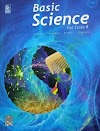Exercises
A. Answer the following in not more than 20 words.
1. What is the study of microorganisms called?
2. How do some microorganisms survive unfavorable conditions?
3. What does the Sargasso Sea owe its name to?
4. Bactria are divided into four groups on the basis of their shape. Name these.
5. What is the major difference between a bacterial cell and the cells of other organisms?
6. How do bacteria reproduce?
7. Mention two ways in which bacteria are helpful to us.
8. Do red and brown algae have chlorophyll?
9. Name a protozoan which can photosynthesise.
10. Name a disease caused by a protozoan.
B. Answer the following in not more than 40 words.
1. What are diatoms? How are they useful to us?
2. Mention three uses of algae.
3. How does Paramoecium move and feed?
4. How are protozoans in the bodies of termites and the bacteria in our intestines helpful?
5. Mention two ways in which fung harm us
C. Answer the following in not more than 100 words.
1. Explain how the growth of algae harms water bodies.
2. Many fungi are of great use to us, Mention three ways in which we use fungi.
3. Why is a virus thought of as something in between the living and nonliving? How do viruses multiply within a host cell?
D. Complete the following
1. The tangled mass of threadlike structures formed by moulds is called
2. Blue-green algae are now called because they are more like bacteria.
3. form the link in the food chain between algae and small aquatic organisms.
4. means the first animal.
5. Sugar fermentation carbon dioxide +
6. The spore case of moulds is called
E. Choose the correct option in coch of the following
1. Penicillin is obtained from a
(a) protozoan
(b) bacterium
(c)mould
(d)mushroom
2 . Lower plants and plantlike organisms reproduce by producing a single cell encased in a tough membrane. This is called
(a) spore
(b) sporangium
(c) mycelium
(d) seed
3. Algin is derived from
(a) bacteria
(b) algae
(c) fungi
(d) protozoans
4. Seabeds have large deposits of silica derived from
(a) snails
(b) protozoans
(c) bacteria
(d) diatoms
5 Microorganisms living in the roots of peas grans, and so on, can convert nitrogen of the air to
nitrates. These are
(a) bacteria
(b) protozoans
(c) diatoms
(d) viruses










No comments:
Post a Comment